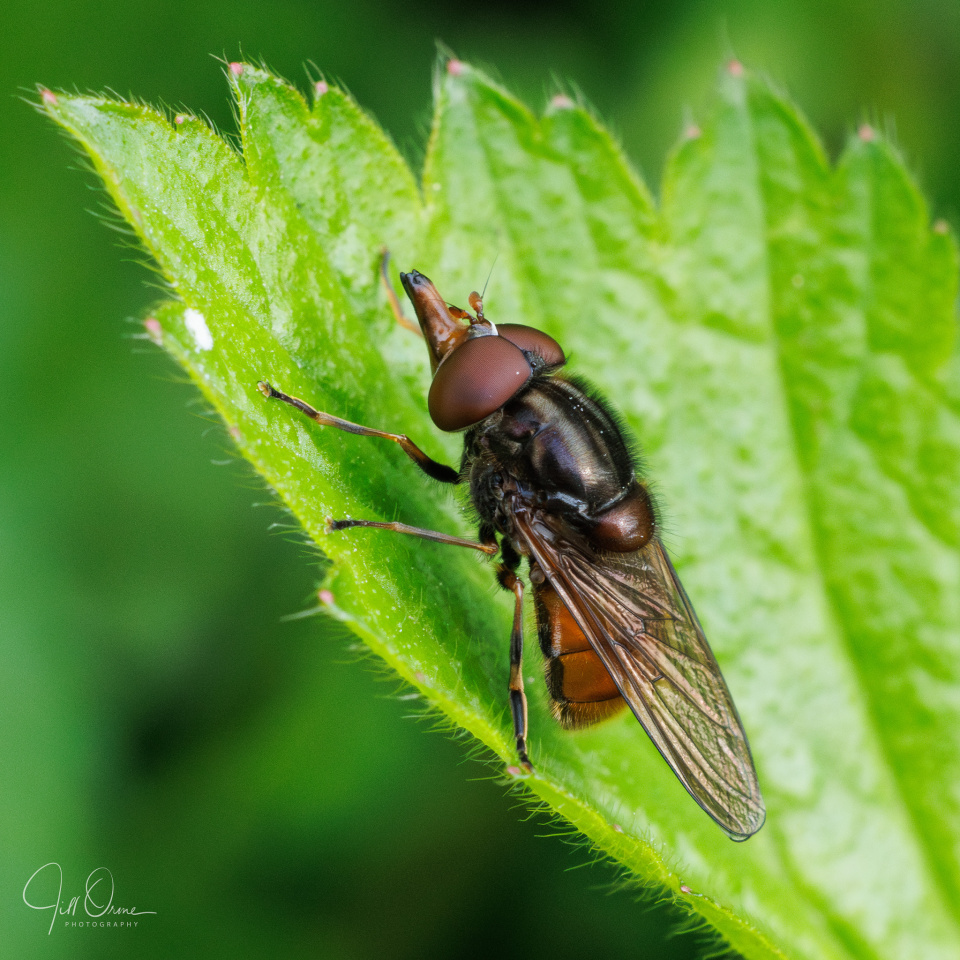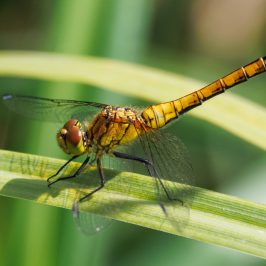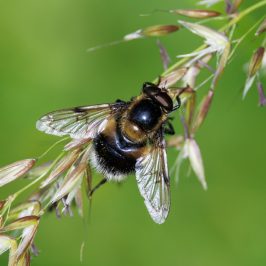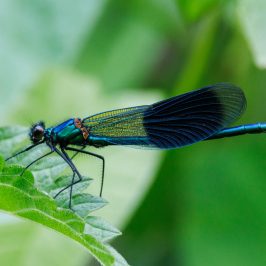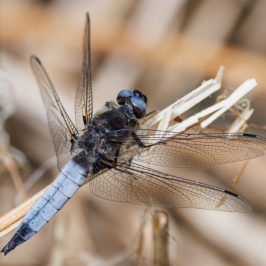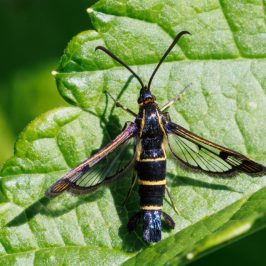It was only last weekend that I found my first Rhingia hoverfly of the season, and today I spotted the other variety. If you check this image against Saturday’s extra I think you’ll easily see the physical difference between the two species: Rhingia campestris here is generally darker and drabber than Rhingia rostrata, and has a black border to its abdomen. Beyond that they have similar habits, their larvae developing in animal dung or silage, and the adults feeding on nectar and pollen – though R. campestris has a wider distribution than R. rostrata, and is at home in a broader range of habitats.
Of the two species, the less common Rhingia rostrata got the better binomial name, because ‘rostrata’ means ‘beaky’, which is patently true. ‘Campestris’, on the other hand, means something along the lines of ‘from the plains’, which is neither memorable nor especially accurate – if it were, I’d be phoning the National Hoverfly Helpline in great excitement to report one turning up in this wet Worcestershire valley. Still, the Rhingia of the Plains is preferable to the common names you sometimes see: I can accept it being referred to as the Common Snout, but I totally draw the line at calling it the Heineken Fly (because it reaches the parts other flies can’t reach – geddit?).

